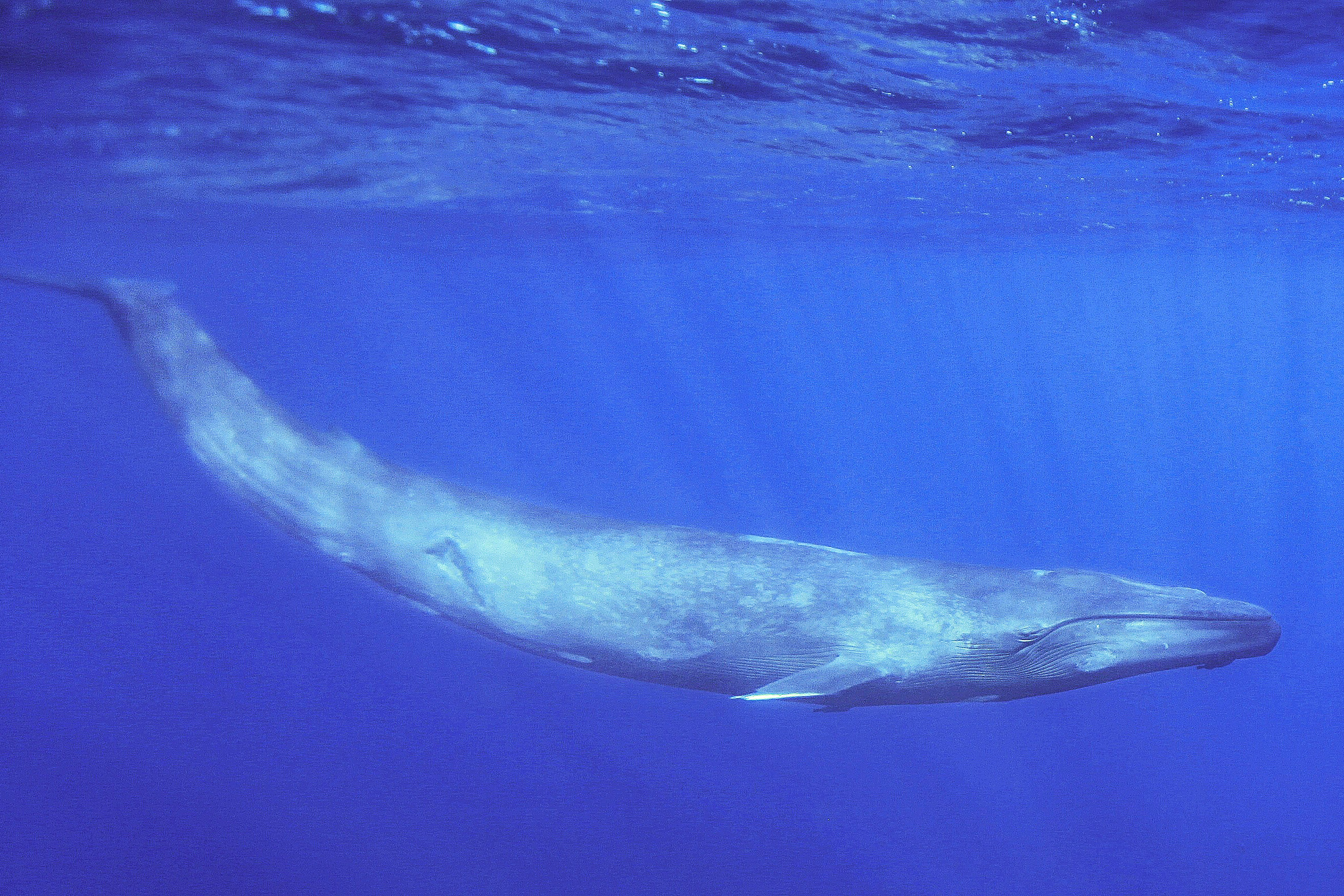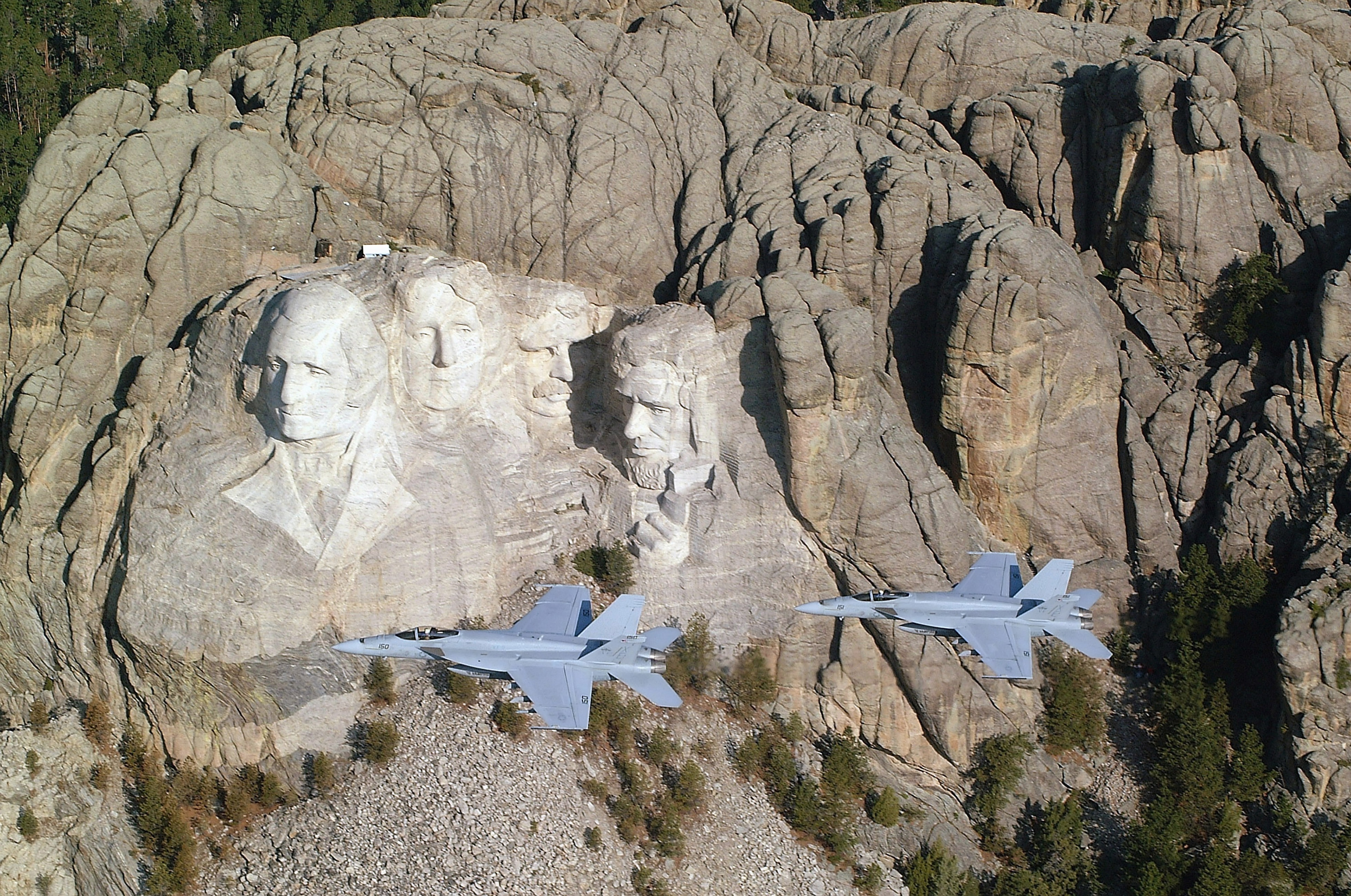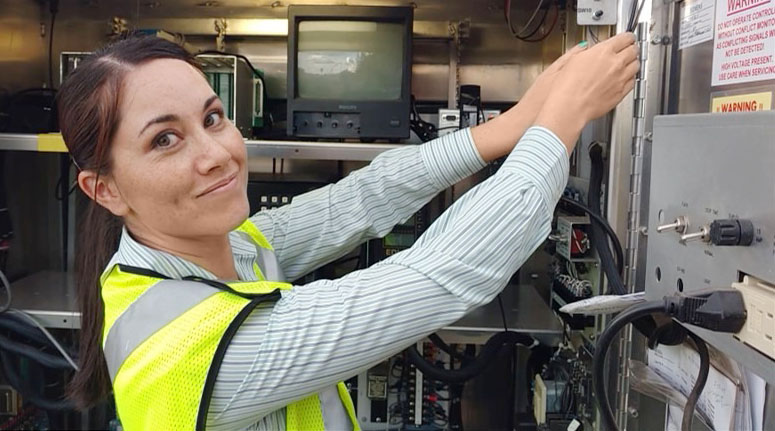Thursday, March 28, 2019
Wednesday, March 27, 2019
Tuesday, March 26, 2019
Ohio Flags of Honor
Ohio Flags of Honor, a traveling memorial for all Ohio soldiers who have lost their lives since 9/11, is coming to the City of Willard park on Friday, June 28 through Sunday June 30th. Police Chief Shannon Chaffins and Mr. Ratliff are in charge of finding individuals, families or groups who are willing to help watch the flags overnight so that the memorial remains intact. There will be police presence at all times, but additional individuals are needed to help keep watch of the memorial as well. If you, your family, you and a friend or another group would like to take a 2 hour shift to watch the flags, please contact Mr. Ratliff and he will get you scheduled for this meaningful event.
Monday, March 25, 2019
Saturday, March 23, 2019
Congratulations to the Thunder Drones
Congratulations to our students representing WCS Drone Club by competing strongly against several area schools at Ehove today! Those participating were Mitchell and Mason Carnahan, Justin Gillmor and Brayden Sykes. They all did great! A special congratulations to Mason Carnahan for placing 2nd in the Newbee category and Justin Gillmor for finishing 3rd in Super Whoop category! Great job Thunder Drones and Coach Graybeal!
Friday, March 22, 2019
The 14th annual Revolutionary War Reenactment and Encampment
May 10-11, 2019 This year marks the 14th annual Revolutionary War Reenactment and Encampment held by the 8th graders at Willard City Schools. Students have the ultimate hands on learning experience through living history. Step back in time and join the 200+ students, staff, and volunteers in period clothing, portraying battles and life in the 18th century. Check WillardRevWar.com or Facebook under WillardRevWar for more details!
Daily Announcements
Today is Friday, March 22, 2019
Today for lunch we will be serving Pizza - variety
Monday for lunch we will be serving Chicken Ranch Wrap
Today is: National puppy day
Today’s Weather: will be a high of 40 and cloudy
Reminder to all 6th grade students Mohican money is due april 5th
Camp Good Grief 2019
For any student ages 5 through 13 who have experienced loss, Stein Hospice is now accepting applications for Camp Good Grief. Camp locations include Huron, Norwalk, and Port Clinton. If you would like further information, or to obtain a consent form, please see Ms. Aplin in the Guidance office.
Ohio Sports News
The Cavs play the Los Angeles Clippers tonight at 7:30
The Blue Jackets played the Edmonton Oilers and lost 1-4
The Indians played the Texas Rangers and lost 3-7
The Ohio State Buckeyes earned a spot in the 68 team field for the NCAA Tournament as an 11 seed in the region and will play the 6 seed in the region, the Iowa State Cyclones in the first round today
Did You Know: womens hearts beat faster than men
Movies to Look Forward to: Disney's Lion King comes out July 17th 2019
Fun fact: Just like fingerprints, everyone has different tongue prints.
Joke of the day: Knock knock… who’s there… gladys… gladys who… gladys the weekend
On this day in history: Mudslide in Washington state kills more than 40 people in 2014.
Vocabulary word of the week: Respect, A feeling of deep admiration for someone or something elicited by their qualities or achievements.
Thought of the week: Rise up start fresh see the bright opportunity in each day
Thursday, March 21, 2019
Daily Announcements
Today is Thursday, March 21, 2019
Today for lunch we will be serving Hot Dog Sandwich
Tomorrow for lunch we will be serving Pizza - variety
`
Today is: National Common courtesy day
Today’s Weather: will be a high of 48 and cloudy
Camp Good Grief 2019
For any student ages 5 through 13 who have experienced loss, Stein Hospice is now accepting applications for Camp Good Grief. Camp locations include Huron, Norwalk, and Port Clinton. If you would like further information, or to obtain a consent form, please see Ms. Aplin in the Guidance office.
Ohio Sports News
The Cleveland Cavs beat the Milwaukee Bucks 107-102
The Blue Jackets play the Edmonton Oilers tonight at 9:00
The Indians played the San Francisco Giants last night and lost 0-13
The Ohio State Buckeyes earned a spot in the 68 team field for the NCAA Tournament as an 11 seed in the region and will play the 6 seed in the region, the Iowa State Cyclones in the first round
Did You Know: the sun is 330,330 times larger than the Earth
Movies to Look Forward to: Disney's Lion King comes out July 17th 2019
Fun fact: To produce a single pound of honey, a single bee would have to visit 2 million flowers
Joke of the day: Why is Cinderella so bad at soccer? A Because she always runs away from the ball!
Quizzes to study for: Remember to study for the Ancient China quiz today if you haven't already.
On this day in history: Series of tornadoes hit the Southeast U.S. in 1932.
Vocabulary word of the week: Respect, A feeling of deep admiration for someone or something elicited by their qualities or achievements.
Thought of the week: Rise up start fresh see the bright opportunity in each day
Tuesday, March 19, 2019
Sunday, March 17, 2019
A Safer Sport
 |
GAME CHANGER Football is rough. More and
more kids are playing a safer version of America’s favorite
sport. NATIONAL FOOTBALL ASSOCIATION
|
Danny Lee planned to join the school football team in fifth grade. His dad had other ideas. “He said if I got hurt now, it could end my football career forever,” Danny told TIME for Kids.
Instead, Peter Lee advised his son to stick with flag football, which does not involve tackling. Lee is a former college football player. He coaches Danny’s flag football team, in Wilmette, Illinois. “I have friends and former teammates who have decided they never want their kids playing tackle football,” he says. “There’s certainly no rush to start in the fifth grade.”
NATIONAL FLAG FOOTBALL ASSOCIATION
 |
| PLAY IT SAFE There is no blocking or tackling in flag football. Still, players wear mouth guards, and some leagues even require helmets. |
Experts say kids should wait until at least 14 to play tackle football, since a kid’s brain is more at risk for injury than an adult’s brain. That has made flag football the fastest-growing team sport in the United States. According to the Sports and Fitness Industry Association, the number of 6-to-12-year-olds playing the sport grew by 38% in the past three years, to 1.5 million. That’s more than those who are playing tackle football.
“All my friends are playing flag,” says Danny. “And every year, it gets more fun.”
Protecting Players
There’s more running in flag football than in tackle, and more scoring. Instead of tackling one another, players try to grab a flag hanging from an opponent’s waist. “It requires finesse,” says Cole Reed. He cofounded the youth athletics group 200% Sports in Las Vegas, Nevada.
NATIONAL FLAG FOOTBALL ASSOCIATION
 |
| FORWARD PASS A quarterback gets set to throw the ball to his teammate during a flag football game in Orlando, Florida. |
Reed used to coach for Pop Warner, a youth tackle league. Ten years ago, he started coaching flag football instead. “Accidents are fewer and far between,” he says.
Repeated jolts to the head and body do the worst damage. In 2017, researchers at Boston University published a study of former football players. It found that playing tackle football before age 12 was linked to an earlier onset of memory and behavior problems.
Safety is a concern in flag football too, says Gerard Gioia. He’s a brain injury specialist at Children’s National Health System, in Washington, D.C. He advises parents to look for coaches trained to recognize concussions (see “Hard Knocks”). “The same questions about safety should be asked of a flag football league as of a tackle league,” he says.
Football’s Future
 |
QUICK HANDS Pulling a flag from an opponent’s belt
takes speed and skill.
|
Does the rise of flag football mean the end of tackle football? It could be saving the sport. Coaches say it teaches skills that players need to advance to tackle football. Plus, it attracts kids to the sport at a younger age. That’s why the National Football League (NFL) sponsors flag football leagues around the country. It wants to promote the sport by inspiring new generations of fans and players.
200% SPORTS
Sophie Day, 13, plays for an all-girl team in the NFL-sponsored 200% Sports league. She considered playing tackle football in high school, until she discovered flag football. “It gives me the same excitement as tackle,” she says. “It’s actually harder. You have to focus on that one flag.”
 |
| GETTY IMAGES |
Her choice is just fine with her mom. “In regular football, you have to be big, you have to be bad, and you have to win,” says Michelle Day. “Not with flag football. It’s known as the friendly sport.”
Hard Knocks
A concussion is an injury to the brain resulting from a blow to the head or body. There are up to 3.8 million sports-related concussions each year.
In the first few minutes, a person with a concussion might appear dazed or confused. He or she might stumble or briefly lose consciousness. Later, a person might experience memory loss, dizziness, headache, or nausea. Or he or she might just not feel right.
If you suffer a serious knock to the head or body, tell an adult immediately.
Saturday, March 16, 2019
Deadly Tornado
By Shay Maunz
A tornado tore through eastern Alabama on March 3, killing at least 23 people. It was the deadliest tornado to hit the United States in six years.
The twister touched down in Lee County, a rural area. It carved a path of destruction nearly a mile wide and 70 miles long.
Officials at the National Weather Service (NWS) said two tornadoes may have hit Lee County. The strongest was rated an EF-4, with estimated top wind speeds of 170 miles per hour. The twister destroyed homes and businesses. Trees were snapped in half.
 |
DISASTER STRIKES Tornado survivors search for their
belongings. Their home was destroyed by the storm.
TAMI CHAPPELL—AFP/GETTY IMAGES
|
“It looks like someone almost just took a giant knife and scraped the ground,” Lee County sheriff Jay Jones told the Associated Press.
Jonathan Clardy is a resident of Beauregard, a Lee County community of about 10,000 people. The tornado tore the roof off the trailer where he lives with his family. They were huddled inside at the time.
“Everybody in Beauregard is a real close-knit family,” Clardy says. “Everybody knows everybody around here. Everybody is heartbroken.”
The Alabama tornado was part of a larger storm system that also hit Florida, Georgia, and South Carolina. At press time, NWS confirmed at least 34 tornadoes had struck the region. On Twitter, President Donald Trump said he had directed the Federal Emergency Management Agency to give Alabama the “A-plus treatment” following the storm.
Friday, March 15, 2019
Blast Off, Crew Dragon!
By Rebecca Mordechai
On March 2, a Crew Dragon spacecraft launched from Kennedy Space Center, in Florida. It’s the first American spacecraft built to carry a crew to the International Space Station since 2011. “What today really represents is a new era in spaceflight,” Jim Bridenstine said after the launch. He is the administrator of NASA.
 |
| ARRIVAL Crew Dragon (left) attaches itself to the International Space Station. NASA |
Crew Dragon was built by SpaceX, a company run by businessman Elon Musk. On this test run, no people were on board. Instead, SpaceX sent up a test dummy. The dummy, named Ripley, has sensors that measure how people onboard might experience acceleration. If Crew Dragon’s six-day mission goes well, two real astronauts might be flying on the ship as soon as this summer.
Thursday, March 14, 2019
Changing Tunes
By Constance Gibbs
Blue whales love to sing. Males sing to attract mates and to communicate across long distances. People are capable of hearing only certain parts of a whale song, so scientists use special audio equipment to record and study the songs in detail. Over several decades, they’ve noticed that the songs have gotten lower in pitch. Pitch describes how high or low a sound is.
Emmanuelle Leroy and a team of scientists now think they know why. They’ve studied more than a million songs from five groups of whales. The songs were recorded in the southern Indian Ocean over a period of seven years. Last fall, the team’s report was published in the Journal of Geophysical Research: Oceans. It sheds light on why the pitch of whale songs has gotten lower: Whales aren’t singing as loudly as they used to.
Why So Low?
 |
| CHIME IN Some whale species are communicating more quietly each year. BARCROFT MEDIA/GETTY IMAGES |
“If the whale sings louder, that will slightly increase the pitch of its call,” Leroy told TIME for Kids. “When the whale sings less loudly, the pitch will slightly decrease.”
So why are whales singing more softly? Leroy’s study presents two hypotheses. The first is that there are more whales. Before the 1970s, commercial whale hunting brought whale populations near extinction. But starting in 1985, the International Whaling Commission banned commercial whaling. As the whale population has increased, whales have generally begun to live closer together. And if the whales are closer together, they don’t have to sing as loudly to communicate.
The study’s second hypothesis is that the pitch of whale songs has dropped due to climate change. An increase of carbon dioxide in the atmosphere has made ocean water more acidic, changing its acoustics. Now the songs can be heard from farther away, so the whales don’t have to sing as loudly.
“In whale communication, this is good news,” Leroy says. “But globally, for the environment, it’s not good at all.” Water that’s more acidic could be damaging to some marine life.
Leroy says that confirming either hypothesis would require more research. “We would need to understand how the blue whales emit the song,” she says. But that would mean studying individual whales. That’s hard to do. It’s also very expensive.
Scientists continue to study whale songs. Each study adds to our understanding. “Maybe our hypotheses will be proven in 10 years,” Leroy says. “Science is often a journey.”
Wednesday, March 13, 2019
Tuesday, March 12, 2019
8 Questions for Elisabeth Anisimow
By Kio Herrera
 |
| Elisabeth Anisimow (right) poses with a Living Art model. |
Twelve-year-old Elisabeth Anisimow started painting as a toddler. Now her work has been seen around the world, including at the International Museum of Children’s Art, in Norway. The California-based artist spoke with TFK’s Kio Herrera about her process and her Living Art series, in which she paints live models in historical settings.
1. You’ve accomplished so much as an artist—and you’re only 12! How did you get interested in painting?
I started painting at a very young age. I’ve always enjoyed going to museums and art exhibitions—anything related to art.
2. What’s the best part of being a painter? And what’s the hardest part?
The best part of being a painter is that I can express myself. There’s no real limit in the world of art, except the edge of your canvas, of course! But then there are other canvases you can use instead. Being a painter is a lot of work, but so is any other kind of creative process.
3. What art has inspired you?
I’ve been inspired by impressionism and artists such as Edgar Degas and Pablo Picasso. I like all the colors and the different styles they use.
4. What does a normal day look like for you?
I start by doing schoolwork. Once I’m done, I go to my garage and measure everything out before setting up my work space. Sometimes, I go to a thrift store to look for props or costumes. I take time to look around and figure out what fits with the piece I’m working on. Usually, I already have an idea of what I want to do. I kind of get a rush from the creative process.
5. We’d love to know more about your Living Art series. How long does it take you to create a portrait?
It’s a long process. I usually start with an idea. Then I try to find items and clothing that would match the time period, such as the Renaissance. Other times, I see something in a store and it changes my original idea completely. But every portrait brings something different and new to the process.
6. How do you choose which model will appear in each Living Art painting?
People usually contact me to be in my paintings. But when I get to choose, I try to imagine how the person would look in the time period that my painting is set in.
7. Your artwork has been auctioned off for charity. Can you tell us about that?
Charity work is really important to me. It makes me feel excited and proud to know that my artwork is helping people. I recently created a sculpture called Wonder Heart that took me a month to complete. It was auctioned off to raise money for the Loma Linda University Children’s Hospital, in California.
8. Do you have any advice for kids who want to become professional artists?
Believe in yourself, and believe in your work. There will always be people who will like your work and others who won’t. Follow your heart.
Monday, March 11, 2019
Saturday, March 9, 2019
Out of This World
In Sal & Gabi Break the Universe, Gabi Reál has a mystery to solve: Who put a raw chicken in her friend’s locker? Gabi suspects the new kid in school, Sal Vidón. But as she investigates, Gabi discovers Sal’s big secret. He has the power to break through the here and now, opening a portal into another universe. Gabi joins Sal as he manipulates space and time. But they both soon learn that these adventures come with risks.
 |
| FROM LEFT: DISNEY BOOKS; STEPHEN BLUE FOR TIME FOR KIDS |
Author CARLOS HERNANDEZ loves science fiction. “It’s the genre that opens up my brain and heart the most,” he told TFK. But he also enjoyed a more down-to-earth element of the story—friendship. “The people you meet out in the world can become your family, just by being there for you when you need them,” he says.
Friday, March 8, 2019
Should Kids Have to Go to School Online on a Snow Day?
January 25, 2019
 |
| ANASTASIIA SHAVSHYNA—GETTY IMAGES |
For many kids, a snow day is cause for celebration. Instead of going to class, they can have snowball fights or go sledding. But snow days are a thing of the past in one South Carolina school district. Anderson School District 5 is the latest of several districts nationwide to replace snow days with classes online.
With e-learning, students log on to a computer to do assignments at home. E-learning is meant to keep the school year on track and reduce the need for makeup days in the summer. But not everyone thinks this is necessary. How would you feel if your school replaced snow days with online learning? Here, two TIME for Kids readers share their views.
YES!
by Raunak Singh, 10
Fair Lawn, New Jersey
 |
| COURTESY MANDEEP SINGH |
I think kids should go to school online on a snow day. When there is a blizzard or a heavy snowstorm, school is closed and kids have nothing to do but watch television and play video games because they can’t go outside. How boring! If students could attend school online on snow days, they would have something productive to do. On a snow day, parents would like to see their kids doing something other than lying around on the couch. With e-learning, kids would still get time to play in the snow, but they would also have something to do when they were stuck in the house. Attending school online lets kids learn new things while sitting at home on their comfy couch. E-learning on snow days is a welcome change for parents, students, and teachers.
NO!
by Gabriela Quesada, 10
Miami, Florida
 |
| COURTESY CASTELLANOS |
Kids need to go to school, but they should not have to go to school online on a snow day. During blizzards and snowstorms, many people lose power. Sometimes, you lose Internet access. If kids don’t have power, how are they going to use the computer? When I was small and lived in Spain, I experienced something similar. My dad wanted me to do online schoolwork on a snow day. But the power was out and there was no Internet, so I couldn’t. Even if there is Internet, the online assignments might be confusing for students. They might need help from teachers. On a snow day, kids and teachers should use the time to rest and enjoy the snow. In my opinion, going to school online on a snow day is not a wise thing to do.
Thursday, March 7, 2019
Digital Detectives
By Shay Maunz
Would you believe that Mount Rushmore, in landlocked South Dakota, is underwater? You shouldn’t. The image above is a fake.
 |
PHOTO ILLUSTRATION BY DREW WILLIS FOR TIME FOR KIDS. |
Such images often appear on social media. In August 2017, while Texas was being rocked by Hurricane Harvey, an image was posted to Twitter. It looked like it had been taken from the driver’s seat of a car. Outside, the road was flooded, and there was a shark in the water. The post read: “Believe it or not, this is a shark on the freeway in Houston, Texas.” It was “liked” 142,000 times—but the photo wasn’t real. It was made with photo-editing software, and had first appeared online in 2011.
Today, fake photos are more common than ever, says Toby Bochan, of Storyful, a company that verifies videos and images on social media. And while you might think a doctored image would be easy to spot, a 2017 study found that people fail to identify more a third of them. Here, Bochan shares strategies for telling real from fake.
Source, Date, Location
“Where is this coming from?” That’s the first question Bochan asks herself when investigating a photo. Then she asks, “What do I know about this person or this publication or this site?” She looks at a profile of the person who posted it. That shark photo was posted by a blogger in Ireland. How likely is it that he would have been in Texas during the hurricane?
Here’s another trick: On a computer, right-click on a photo, then select “search Google for image.” Doing so turns up photos that look the same or similar, which can provide important clues to a photo’s origin. When applied to the shark photo, the trick turns up posts claiming that it was taken during hurricanes in Puerto Rico, New Jersey, and Florida.
Experts also look at a photo’s metadata. Metadata is information embedded in a file that tells when the image was created, the size of the file, and other details. It can reveal whether the file has been doctored. If a photo shows a public place, it’s easier to verify. “Rarely does something major happen and only one person is posting about it on social media,” Bochan says.
“One of the reasons misinformation spreads faster than truth is that it tends to be very simple,” Bochan adds. “Unlike life, which is complicated.” And fake photos? They’re designed to make people feel angry, sad, happy, or scared.
 |
| STOCKTREK IMAGES/GETTY IMAGES |
So if you have a strong reaction when looking at a photo, stop and consider what you see, Bochan says. Remember: source, date, location. With these three words, you too can be a digital detective.
Student Challenge:
Here is one of the photos used to create the fake Mount Rushmore image. Use online tools and techniques to see if you can find it on the Web. How else can you determine if a photo is real? Toby Bochan of Storyful recommends using Google Earth to view locations where an image appears to originate.
Wednesday, March 6, 2019
In Your Dreams
TFK Kid Reporter Roman Peterson

PARAMOUNT ANIMATION AND NICKELODEON MOVIES
The new animated film Wonder Park tells the story of Wonderland, an adventure-filled amusement park that June and her mother create in their imagination. The park is inhabited by a crew of furry friends, including beaver brothers Cooper and Gus. The brothers act as the park’s “builders,” constructing the rides that June and her mom dream up.
Actor and comedian KENAN THOMPSON voices Gus. Just as June uses her imagination to construct Wonderland, Thompson used his imagination to bring an animated beaver to life on the big screen. How did he prepare for the role? “I thought about what I know about beavers—that they’re kind of high-energy,” he told TFK Kid Reporter Roman Peterson.
Thompson says his favorite thing about the movie is its magic. “It’s all about the imagination,” he says. “Imagination is a powerful thing.”Wonder Park hits theaters March 15.

PARAMOUNT ANIMATION AND NICKELODEON MOVIES
The new animated film Wonder Park tells the story of Wonderland, an adventure-filled amusement park that June and her mother create in their imagination. The park is inhabited by a crew of furry friends, including beaver brothers Cooper and Gus. The brothers act as the park’s “builders,” constructing the rides that June and her mom dream up.
Actor and comedian KENAN THOMPSON voices Gus. Just as June uses her imagination to construct Wonderland, Thompson used his imagination to bring an animated beaver to life on the big screen. How did he prepare for the role? “I thought about what I know about beavers—that they’re kind of high-energy,” he told TFK Kid Reporter Roman Peterson.
Thompson says his favorite thing about the movie is its magic. “It’s all about the imagination,” he says. “Imagination is a powerful thing.”Wonder Park hits theaters March 15.
Tuesday, March 5, 2019
Cary Ashby to Visit Willard City Schools - By Hanna Wiles
Cary Ashby is an author, comic fan, and Norwalk Reflector reporter. This Thursday, March 7th Cary will be a visiting our school as a guest speaker for grades 6-8th. He will talk about his experiences with being a reporter, what it’s like to be an author, and about comic-books. Later that evening you can come to the Elementary cafeteria from 6-7:30 pm with your families to hear more from Cary. There will be pizza, drinks, and dessert. Make sure you prepare your questions for a great discussion!
Monday, March 4, 2019
Saturday, March 2, 2019
Engineering Our World
By Allison Singer, Constance Gibbs and Kio Herrera

LEFT TO RIGHT: CHRIS CORSMEIER, LADWP; COURTESY JAY BRANNON; COURTESY YUNG KOPROWSKI
“We’re called civil engineers because we engineer civilization.” These are the words of Yung Koprowski, one of the many civil engineers who design, build, and maintain the infrastructure of our towns and cities.
Civil engineers specialize in different things, and each type of civil engineer contributes to society in a unique way. But all of them serve a common purpose: to help people. TIME for Kids spoke with three civil engineers to find out what they do and how they help our communities survive and thrive.
On the Move

COURTESY YUNG KOPROWSKI
The roads in your town didn’t appear by magic. They are the result of careful planning by transportation engineers, like Yung Koprowski. “We make it safer and easier for people to travel to the places where they live, work, and play,” she told TFK. Koprowski works in the Phoenix, Arizona, area. There, she plans new transportation systems and finds ways to improve existing ones.
Transportation engineers have a lot to think about, from road signs and markings to traffic-signal timing. They are also responsible for planning bike lanes and sidewalks. While advanced math and science expertise are needed for this work, Koprowski says problem-solving is one of the most critical skills. “We do a lot of writing and research,” she says. Creativity and design are important, too. Koprowski enjoys designing visuals to explain complex plans and concepts to the public, as well as to the elected officials who need to approve them.

SAFETY FIRST Transportation engineers make sure roadways, like these in Phoenix, are efficient, so drivers can travel safely.
MOREY MILBRADT—GETTY IMAGES
Her advice for future engineers? “Don’t be hesitant to think outside the box and apply your own ideas and solutions,” she says. “Engineering is making mistakes. It’s okay to fail as long as you don’t stop trying.” —By Allison Singer
Trailblazer

COURTESY JAY BRANNON
Jay Brannon is an environmental engineer. She manages the construction of public water systems for the city of Portland, Oregon. This means she works on pipes that move water beneath the city. Recently, she oversaw the rebuilding of a pipe under a hiking trail in Forest Park. The pipe allows stormwater to flow underground so it doesn’t wipe out the trail. To complete the project, Brannon worked with designers, geologists, architects, and contractors. “All of these people have really different communication styles,” she told TFK.
According to Brannon, being a woman of color in the engineering field comes with challenges. “There are not many of us, so it can be frustrating,” she says. One of Brannon’s goals is to make engineering more accessible. To do this, she is working on a book to inspire students of color to pursue a career in engineering. “That representation is really important,” she says. —By Constance Gibbs
Master Builder

CHRIS CORSMEIER, LADWP
When Ruwanka Purasinghe was in middle school, he built a theme park in his bedroom. It was made of Lego bricks. “That was definitely one of the moments when my dad thought I would grow up to be an engineer,” he told TFK.
Purasinghe says he knew about engineering as a kid. His father was a professor of civil engineering. “But I wasn’t really sure I wanted to do that for the rest of my life,” he admits. While in college, he traveled to Italy. “Seeing the ancient aqueduct system that served the people of Rome and is still being used today really opened my eyes to this career,” he says.
Now, Purasinghe is a geotechnical engineer for the Los Angeles Department of Water and Power. He comes up with solutions, such as pipe systems and aboveground tanks, to water-supply problems. This work is especially important when the city is facing a drought. For inspiration, he looks to the past. “Civil engineers have been solving problems for thousands of years,” he says. “I enjoy thinking of ways to help future generations.” —By Kio Herrera
To see these engineers in action, watch the videos from NBC News Learn in the paired texts below.
Assessment: Click here for a printable quiz.

LEFT TO RIGHT: CHRIS CORSMEIER, LADWP; COURTESY JAY BRANNON; COURTESY YUNG KOPROWSKI
“We’re called civil engineers because we engineer civilization.” These are the words of Yung Koprowski, one of the many civil engineers who design, build, and maintain the infrastructure of our towns and cities.
Civil engineers specialize in different things, and each type of civil engineer contributes to society in a unique way. But all of them serve a common purpose: to help people. TIME for Kids spoke with three civil engineers to find out what they do and how they help our communities survive and thrive.
On the Move

COURTESY YUNG KOPROWSKI
The roads in your town didn’t appear by magic. They are the result of careful planning by transportation engineers, like Yung Koprowski. “We make it safer and easier for people to travel to the places where they live, work, and play,” she told TFK. Koprowski works in the Phoenix, Arizona, area. There, she plans new transportation systems and finds ways to improve existing ones.
Transportation engineers have a lot to think about, from road signs and markings to traffic-signal timing. They are also responsible for planning bike lanes and sidewalks. While advanced math and science expertise are needed for this work, Koprowski says problem-solving is one of the most critical skills. “We do a lot of writing and research,” she says. Creativity and design are important, too. Koprowski enjoys designing visuals to explain complex plans and concepts to the public, as well as to the elected officials who need to approve them.

SAFETY FIRST Transportation engineers make sure roadways, like these in Phoenix, are efficient, so drivers can travel safely.
MOREY MILBRADT—GETTY IMAGES
Her advice for future engineers? “Don’t be hesitant to think outside the box and apply your own ideas and solutions,” she says. “Engineering is making mistakes. It’s okay to fail as long as you don’t stop trying.” —By Allison Singer
Trailblazer

COURTESY JAY BRANNON
Jay Brannon is an environmental engineer. She manages the construction of public water systems for the city of Portland, Oregon. This means she works on pipes that move water beneath the city. Recently, she oversaw the rebuilding of a pipe under a hiking trail in Forest Park. The pipe allows stormwater to flow underground so it doesn’t wipe out the trail. To complete the project, Brannon worked with designers, geologists, architects, and contractors. “All of these people have really different communication styles,” she told TFK.
According to Brannon, being a woman of color in the engineering field comes with challenges. “There are not many of us, so it can be frustrating,” she says. One of Brannon’s goals is to make engineering more accessible. To do this, she is working on a book to inspire students of color to pursue a career in engineering. “That representation is really important,” she says. —By Constance Gibbs
Master Builder

CHRIS CORSMEIER, LADWP
When Ruwanka Purasinghe was in middle school, he built a theme park in his bedroom. It was made of Lego bricks. “That was definitely one of the moments when my dad thought I would grow up to be an engineer,” he told TFK.
Purasinghe says he knew about engineering as a kid. His father was a professor of civil engineering. “But I wasn’t really sure I wanted to do that for the rest of my life,” he admits. While in college, he traveled to Italy. “Seeing the ancient aqueduct system that served the people of Rome and is still being used today really opened my eyes to this career,” he says.
Now, Purasinghe is a geotechnical engineer for the Los Angeles Department of Water and Power. He comes up with solutions, such as pipe systems and aboveground tanks, to water-supply problems. This work is especially important when the city is facing a drought. For inspiration, he looks to the past. “Civil engineers have been solving problems for thousands of years,” he says. “I enjoy thinking of ways to help future generations.” —By Kio Herrera
To see these engineers in action, watch the videos from NBC News Learn in the paired texts below.
Assessment: Click here for a printable quiz.
Friday, March 1, 2019
Willard High School Orchestra Contest
On Saturday, February 23rd, the Willard High School Orchestra, directed by Mrs. Rebecca Plotner, went to state contest at Perrysburg High School for the second consecutive year. The orchestra received a superior rating, which is the highest overall rating. In order to go to state contest, the orchestra must prepare three pieces to perform in front of three judges. Each of the judges gives notes as to what was positive about the performance and areas that the group needs some work. They then give the orchestra a rating. The orchestra then moves to sight reading, where they are required to perform a piece that they’ve never seen before. There is also a judge there that rates them. The judges combine the scores they gave to give an overall rating to the group. Willard High School Orchestra received three superior ratings, and one excellent.
This year, there were three eighth graders that joined the high school orchestra: Lucille Molloy and Rebecca Honaker-who play the cello-and Naomi Schag-who played with the group last year as well and plays the violin- had the opportunity to move up from middle school orchestra and portray their talents in the more advanced group. All three have been thrilled to participate in the group, although the music is much harder and provides them a challenge. One of their favorite activities to participate in was the Christmas Tour, where they spent the day performing recognizable Christmas songs for Willard Elementary, St. Francis, and Celeryville. They have worked very hard this year on their instruments and cannot wait to see what musical future awaits in the Willard High School Orchestra!
This year, there were three eighth graders that joined the high school orchestra: Lucille Molloy and Rebecca Honaker-who play the cello-and Naomi Schag-who played with the group last year as well and plays the violin- had the opportunity to move up from middle school orchestra and portray their talents in the more advanced group. All three have been thrilled to participate in the group, although the music is much harder and provides them a challenge. One of their favorite activities to participate in was the Christmas Tour, where they spent the day performing recognizable Christmas songs for Willard Elementary, St. Francis, and Celeryville. They have worked very hard this year on their instruments and cannot wait to see what musical future awaits in the Willard High School Orchestra!
TFK Explains: National Emergencies
By Brian S. McGrath

At the White House on February 15, 2019, President Trump declares a national emergency.
CHIP SOMODEVILLA—GETTY IMAGES
President Donald Trump declares a national emergency on the U.S.-Mexico border.
What is a national emergency?
In 1976, Congress passed the National Emergencies Act, which allows a president to declare a national emergency if he or she thinks there is a threat to the country’s security. An emergency declaration gives a president special powers to deal with a crisis.
Why did President Trump declare a national emergency?
At a press conference, Trump said, “[We need to] confront the national security crisis on our southern border.” He wants to fund construction of a border wall without getting approval from Congress. On February 14, Congress passed a bill that included about $1.4 billion for border barriers. Trump wanted $5.7 billion. By declaring an emergency, he could build the wall with money meant for other projects. “I didn’t need to do this,” Trump said, noting that he could have waited to secure funding. “But I’d rather do it much faster.”
What can Congress do?
Many Congress members fear that Trump is setting a bad example. They worry that future presidents could declare national emergencies in order to get around the government’s system of checks and balances.
Congress could pass a resolution rejecting the president’s declaration. It would likely be vetoed by the president. Congress could then vote to override the veto. But that won’t happen if most Republican lawmakers decide to support the president.
What other challenges does the president face?
A group of 16 states filed a lawsuit to block the president’s emergency declaration. They say the situation is not a true emergency. They argue that Trump does not have the power to take money meant for other projects in order to pay for a border wall. Other groups suing the president include the American Civil Liberties Union, Texas landowners and environmentalists, and wildlife protection organizations. Some Democrats in Congress may also sue.
The legal process could take a long time. Construction on the wall will probably not begin until the court cases are decided.
Have other presidents declared national emergencies?
Yes. Since 1979, presidents have declared 59 national emergencies. Of those, 31 are still in effect. President George W. Bush declared an emergency after the terrorist attacks on September 11, 2001. But Trump’s declaration is different from those made in the past. It is the first to use emergency powers to obtain funding denied by Congress.

At the White House on February 15, 2019, President Trump declares a national emergency.
CHIP SOMODEVILLA—GETTY IMAGES
President Donald Trump declares a national emergency on the U.S.-Mexico border.
What is a national emergency?
In 1976, Congress passed the National Emergencies Act, which allows a president to declare a national emergency if he or she thinks there is a threat to the country’s security. An emergency declaration gives a president special powers to deal with a crisis.
Why did President Trump declare a national emergency?
At a press conference, Trump said, “[We need to] confront the national security crisis on our southern border.” He wants to fund construction of a border wall without getting approval from Congress. On February 14, Congress passed a bill that included about $1.4 billion for border barriers. Trump wanted $5.7 billion. By declaring an emergency, he could build the wall with money meant for other projects. “I didn’t need to do this,” Trump said, noting that he could have waited to secure funding. “But I’d rather do it much faster.”
What can Congress do?
Many Congress members fear that Trump is setting a bad example. They worry that future presidents could declare national emergencies in order to get around the government’s system of checks and balances.
Congress could pass a resolution rejecting the president’s declaration. It would likely be vetoed by the president. Congress could then vote to override the veto. But that won’t happen if most Republican lawmakers decide to support the president.
What other challenges does the president face?
A group of 16 states filed a lawsuit to block the president’s emergency declaration. They say the situation is not a true emergency. They argue that Trump does not have the power to take money meant for other projects in order to pay for a border wall. Other groups suing the president include the American Civil Liberties Union, Texas landowners and environmentalists, and wildlife protection organizations. Some Democrats in Congress may also sue.
The legal process could take a long time. Construction on the wall will probably not begin until the court cases are decided.
Have other presidents declared national emergencies?
Yes. Since 1979, presidents have declared 59 national emergencies. Of those, 31 are still in effect. President George W. Bush declared an emergency after the terrorist attacks on September 11, 2001. But Trump’s declaration is different from those made in the past. It is the first to use emergency powers to obtain funding denied by Congress.
Subscribe to:
Posts (Atom)




